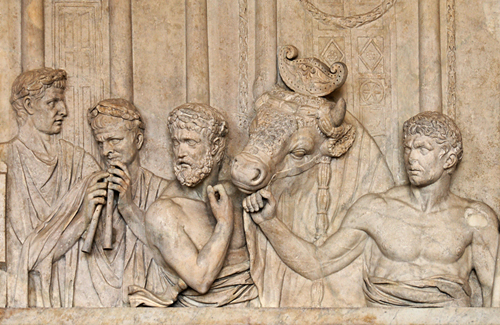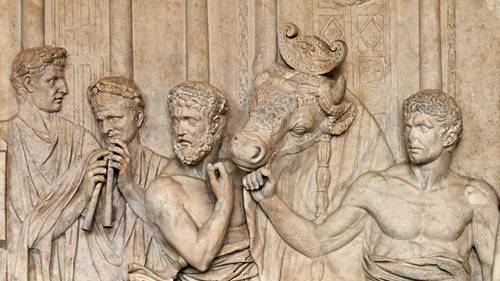Pet-Keeping and Animal Sacrifice as Seen Economically and Archaeologically
Source: heritagedaily.com

Pet-keeping and animal sacrifice in antiquity were common practices. How the animals were treated can often be seen archaeologically.
By most modern standards, household pets such as cats and dogs are looked at as companion animals. It can be assumed that some people in the past acquired a similar affection to household or working animals. A companion animal is generally valued as being able to bring its owner a sense of loyalty, comfort, security and friendship.
Aside from being strictly companions, pets may additionally provide a household function such as dogs providing security for the family and household and cats catch and kill small, destructive pests. Companion animals need not always be soft and cuddly housemates and dogs and cats were not the only animals valued as pets. In some medieval and post-medieval farming societies, cattle and sheep were regarded as companion animals in life but at the time of their death, they quickly were converted from pet-status to food commodity (Harris 1986, 177-178).
Historical evidence surrounding the keeping of pets clearly shows that animals were prized not only for their household duties, but some, for more non-practical reasons. Some companion animals came to symbolize the status of a person or family. Lap dogs were in fashion in the early seventeenth century, as they are today.
The tiny dogs were a sure sign of wealth and status as evident by the sheer uselessness of the dog. Lapdogs generally do not catch and kill household pests, could not secure the home of its owner or protect its family from intruders. Aside from being little more than a vocal alarm, lapdogs have virtually no other practical purpose.
In Thomas’ (1983) work, it is stated that, “The Stewarts in particular, were so obsessed with them that in 1617 James I was accused of loving his dogs more than his subjects.” Other not-so-cuddly animals were often kept as non-practical companion animals or symbols of wealth. Exotic birds and monkeys among other unusual critters within the society were also clues to the statuses of their owners. Archaeologically, trade routes and bone evidence give clues to the animals imported and exported by a community. North African tortoises were traded as far back as the seventeenth century (Thomas 2005, 101) and the acquisition or collecting of strange, unusual or non-local animals signifies the elevated status of an individual (Thomas 2005, 101).
[...]
Read the full article at: heritagedaily.com






















